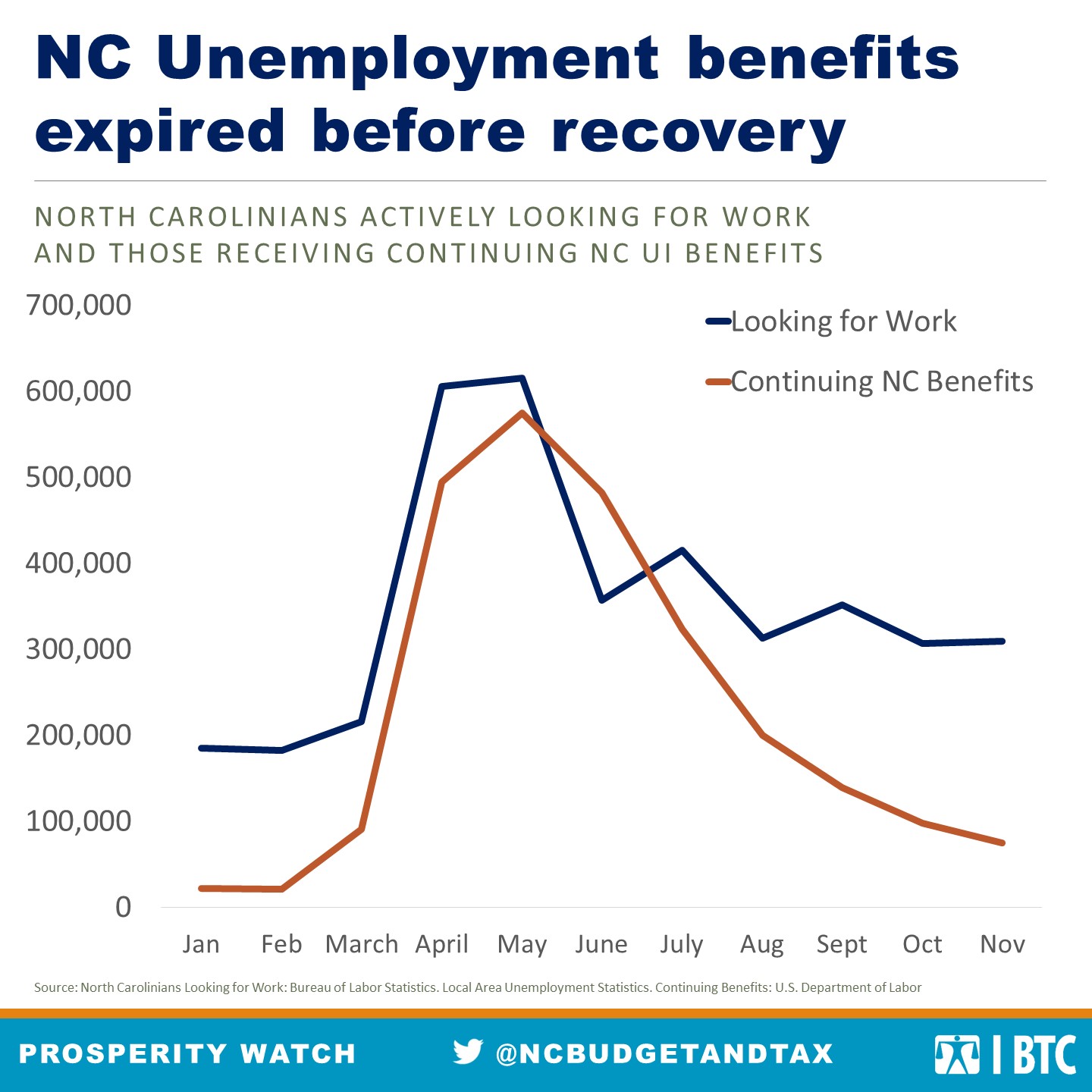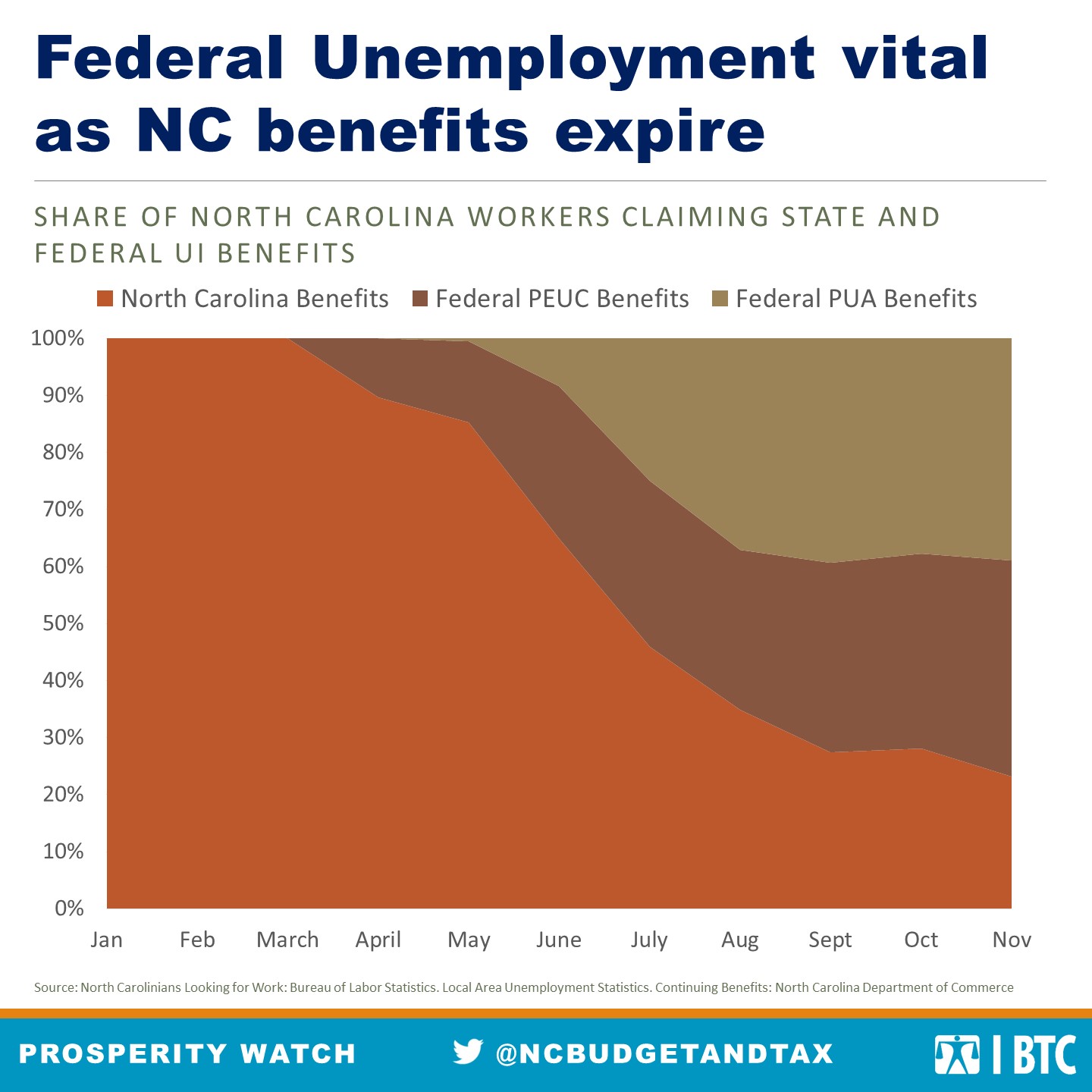A bridge that is supposed to sustain North Carolinians who lose their jobs didn’t get them across the economic chasm created by COVID-19. Because the North Carolina legislature set the duration of Unemployment Insurance (UI) benefits at a sliding scale that was 12 weeks when the pandemic started shutting things down about 10 months ago, hundreds of thousands of North Carolinians were looking for work with no jobs to be found and no support through state UI benefits.


Unemployment Insurance claims spiked along with the number of North Carolinians looking for work in the first few months of the COVID-19 pandemic, precisely as would be expected during a severe economic crisis. Next, both claims and the need for employment dipped somewhat in June as some of the jobs lost in the first wave of the pandemic returned.
The story from the end of July through the end of 2020 was a completely different one. From August on, more than 300,000 North Carolinians continued to look for work every month — but the number of jobless workers receiving continuing North Carolina benefits plummeted to a weekly average of under 75,000 by November. Federal benefits provided through the CARES Act, and temporarily extended by Congressional action at the end of December, have partially made up for inadequate North Carolina UI benefits, but these stopgaps have not filled the financial hole North Carolina families are facing.
With months left to go (at least) before anything resembling economic normalcy returns, the bridge remains incomplete. Like many areas of economic life, COVID-19 reveals how much work we have to do to create a UI system that truly sustains working people during times of upheaval.
 Justice Circle
Justice Circle